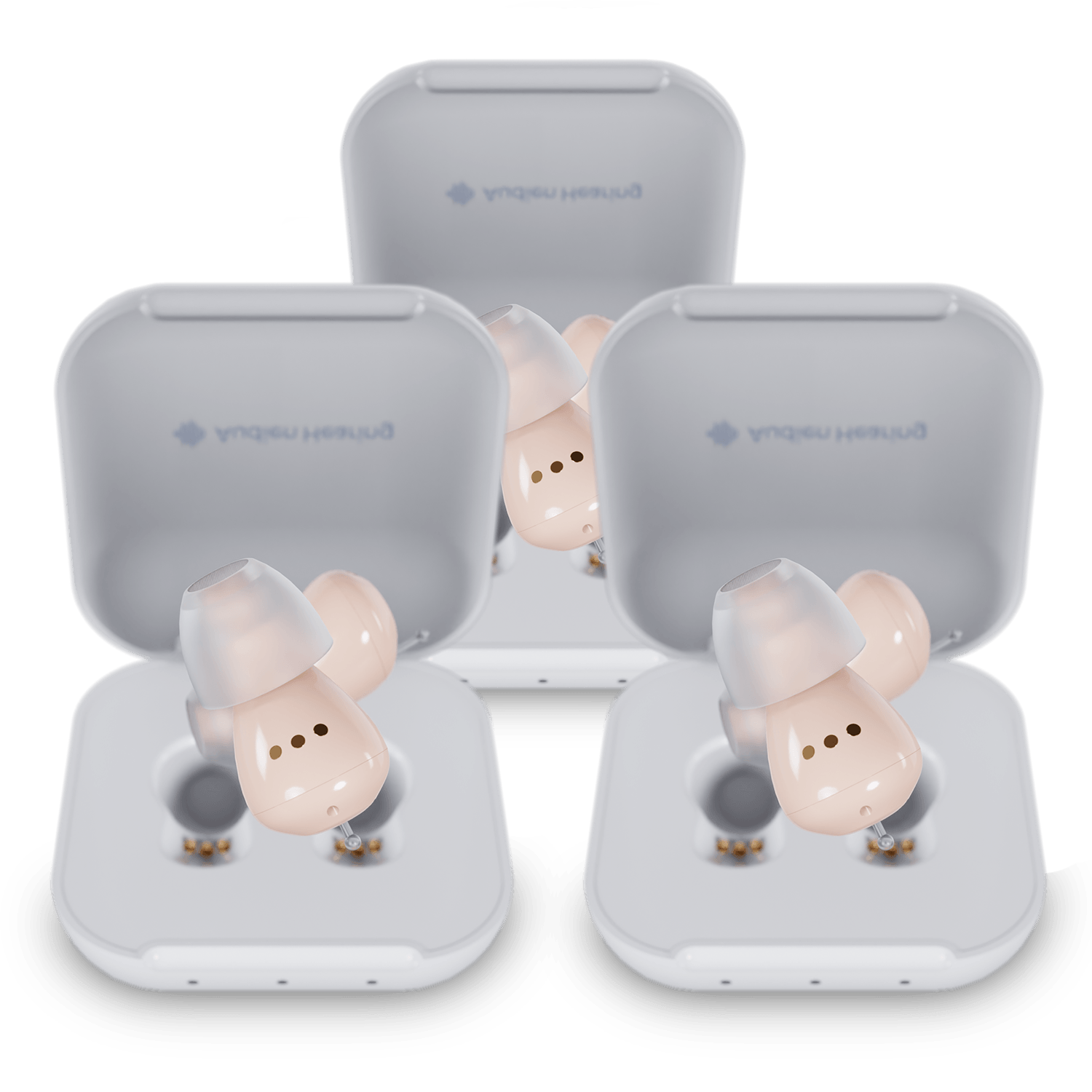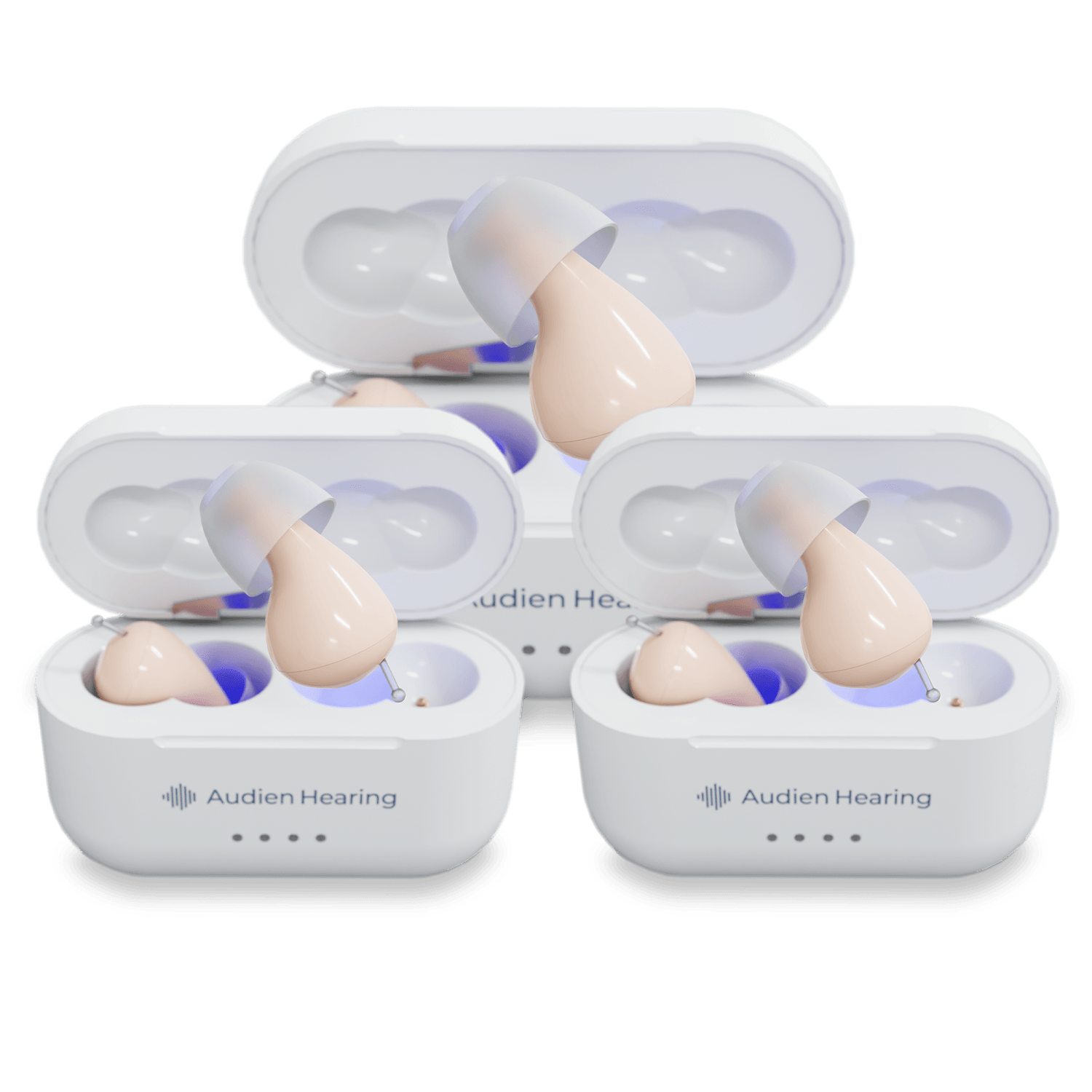Ear wax is a natural secretion for the ears that plays a vital role in their overall health. Also known as cerumen, this sticky substance helps to keep the ear canals free and clear of debris while also simultaneously providing some level of protection against infections thanks to its antimicrobial properties.
While ear wax has a number of benefits (including antibacterial properties), there are instances in which too much ear wax can build up.
Wax build-up can cause problems such as tinnitus or even hearing loss. In most cases, earwax is able to clear itself out of the ears. Yet, there are scenarios in which it may need assistance to properly be removed.
Below is a detailed guide for ear wax removal, information on when you should clean your ears, at-home remedies, as well as the steps a medical professional may take to properly clean your ears.
Why You May Need To Clean Your Ears
The vast majority of people over-clean them by utilizing unsafe methods such as cotton swabs. When it comes to ear wax and the ear canal, there should be a thin film of ear wax in the ear canal to help keep the ear canal adequately protected against the external environment.
In most instances, the ear is self-cleaning. It is able to maintain an appropriate amount of earwax in the canal all on its own. Earwax is continuously being produced by special cells in the ear canal, and jaw movements like chewing or talking help to naturally move old wax out of the canal. The wax flakes off when it arrives at the outer ear.
While ear wax is naturally able to flow out of the ear, there are instances where ear cleaning may be necessary. Below is a closer look at some of the cases when you may need to consider ear wax removal and ear canal cleaning.
Excess Wax: Overproducing
One possible factor that may require you to clean your ears is if your ears are overproducing ear wax. Ear wax overproduction can require you to help remove the extra ear wax that your ears are unable to clear on their own.
If you overproduce ear wax and leave it to its own devices, the ear wax could build up and cause a blockage known as impaction. When ear wax becomes impacted, it blocks the ear canal, which can cause a few symptoms. These include muffled sounds, decreased ability to hear, and even can contribute to tinnitus.
Underproducing Ear Wax
Another reason you may need to manually remove ear wax is if your ears are underproducing ear wax. The steady excretion of earwax helps to push old wax out of the ears. So, when your body is underproducing, it can cause older wax to remain in the ears, where it can become hard.
An underproduction in ear wax becomes more common as you get older and your body begins to naturally slow down. When your glands decrease the amount of ear wax they produce, older wax remains in the canal. There, it collects dirt, dust, and debris, causing it to become darker in color and less malleable.
Many people get concerned when they see black earwax. The reality is that it is simply old earwax, and while not harmful, it could indicate that your ears are having a difficult time getting rid of wax in your ear canal.
Blocked Ear Canals
Another potential reason as to why ear wax may be building up in your ear canal is that the entrance to the canal is blocked by something like an earbud or hearing aid.
When the entrance of the ear canal is blocked, it doesn’t allow the wax to properly flow out of the ear. It traps moisture within the ear that can contribute to wax buildup.
Devices like earbuds and hearing aids create a seal with the ear canal to allow for an improvement in sound quality. This assistance can come at the cost of decreased breathability of the canal.
If you utilize hearing aids or earbuds frequently, you should do your best to keep them clean. Set aside times in the day to give your ears a break and allow them to breathe.
What To Do When Ear Wax Builds Up?

A buildup of wax can occur to anyone. Indications that you may have ear wax buildup could be muffled hearing, tinnitus, and abnormally dark earwax. These can be indications of an earwax buildup and should be assessed by an ear specialist like an audiologist or otolaryngologist.
Here is a closer look at the steps you should take if you suspect that you have an accumulation of earwax in your ears.
Do Not Use Cotton Swabs
One of the largest misconceptions about ear health is that cotton swabs are a tool that can be utilized to clean them out. It is widely accepted by the medical community that you should not use them to clean your ears. There are a number of reasons why they are not good for cleaning your ears.
The first reason is that they can actually worsen ear wax blockage. When you utilize a cotton swab to clean your ears, you are doing so blindly. Instead of removing the wax, you could actually be pushing it further back into your ears.
The next reason is that a cotton swab could injure your eardrum if it goes too deep into the ear. While you may think you know how far back you can go, there is always the chance for unforeseen circumstances such as sneezing or tripping, where you may accidentally lodge the cotton swab into the eardrum and cause a ruptured eardrum.
Seek Medical Expertise
Generally, if you have an earwax blockage that is noticeable, your best bet is probably to get it checked out by a medical professional. Specialists like an audiologist, ENT (Ear, Nose, and Throat Specialist), or otolaryngologist are best suited to assist. However, your primary care may also potentially be able to help you or refer you to someone who can help.
If professional removal of ear wax is required, there are two main methods that may be performed. The first and most common method utilized is ear irrigation, where water is pushed lightly into the ear to try and flush out the extra wax with a rubber-bulb syringe or water pick. The other method is wax extraction utilizing a specialized tool kit to manipulate the wax out of the ear.
At-Home Remedies
If you experience frequent ear wax blockages, your healthcare provider may recommend routine ear cleanings to help reduce the chances of ear wax impaction.
Discover some of the over-the-counter remedies as well as how you perform them.
Oil
The use of oil to help with ear wax buildup is one of the gentlest. Simply lay down on your side and place a few drops of oil into the ear that is facing up and repeat for the other side.
This will not work quickly, but doing this on a consistent basis can help to loosen up any buildup and allow it to naturally flow out of the ears. You have a few options, including mineral oil, olive oil, and baby oil.
Ear Cleaning Solution
The next method is to utilize an ear cleaning solution. Ear cleaning solutions work by dissolving the wax into the solution and then subsequently allowing the solution to drain. Examples may be hydrogen peroxide, a saline solution, or glycerin.
Depending on the solution, the instructions may vary, but many of them closely resemble one another. If you are ever unsure, follow the instructions that are listed.
To utilize an ear cleaning solution, you lay on your side with one ear facing the ceiling. You put the directed number of drops into your ear (some prefer to use an eyedropper).
Then, massage the ear to enable the solution to reach the end of your ear canal. Typically you are supposed to wait a few minutes. Then, with a towel over your ear, you flip over and allow the ear opening to completely drain the discharge. This method is then repeated for the other ear.
Irrigation
The last at-home method you can utilize is ear irrigation. With ear irrigation, you utilize a bulb syringe with warm water and gently push the water into your ear canal. Many people find that combining this method with oil as a pretreatment can help to soften the wax. This can allow for it to be more easily removed by the water.
Audien Ear Cleaners
We'd be remiss not to mention our new Audien Ear Cleaners in an article like this! Our ear cleaners feature a simple screw tip that you can insert into your ear, screw in a circular motion, and remove earwax.
There are many different ear cleaning tools out there as well, but we found that this type of model was most affordable and effective.
Clean, Care, and Caution

Ear cleaning techniques are filled with misinformation and should be taken more seriously. For the vast majority of people, ear cleanings are unnecessary, and utilizing things like cotton swabs could put your hearing at risk. Additionally, using anything like ear candling may cause dangerous perforations.
Ear cleanings should only be performed by those with an ear wax accumulation issue. Utilizing techniques such as irrigation, cleaning solution, and oil can help. If you suspect that you have built-up earwax, you should consult with your doctor to find the best treatment plan for your circumstances.
Sources
Extent of cotton-bud use in ears | NCBI
Ruptured eardrum (perforated eardrum) - Symptoms and causes | Mayo Clinic
Clinical Practice Guideline (Update): Earwax (Cerumen Impaction) | Sagepub













